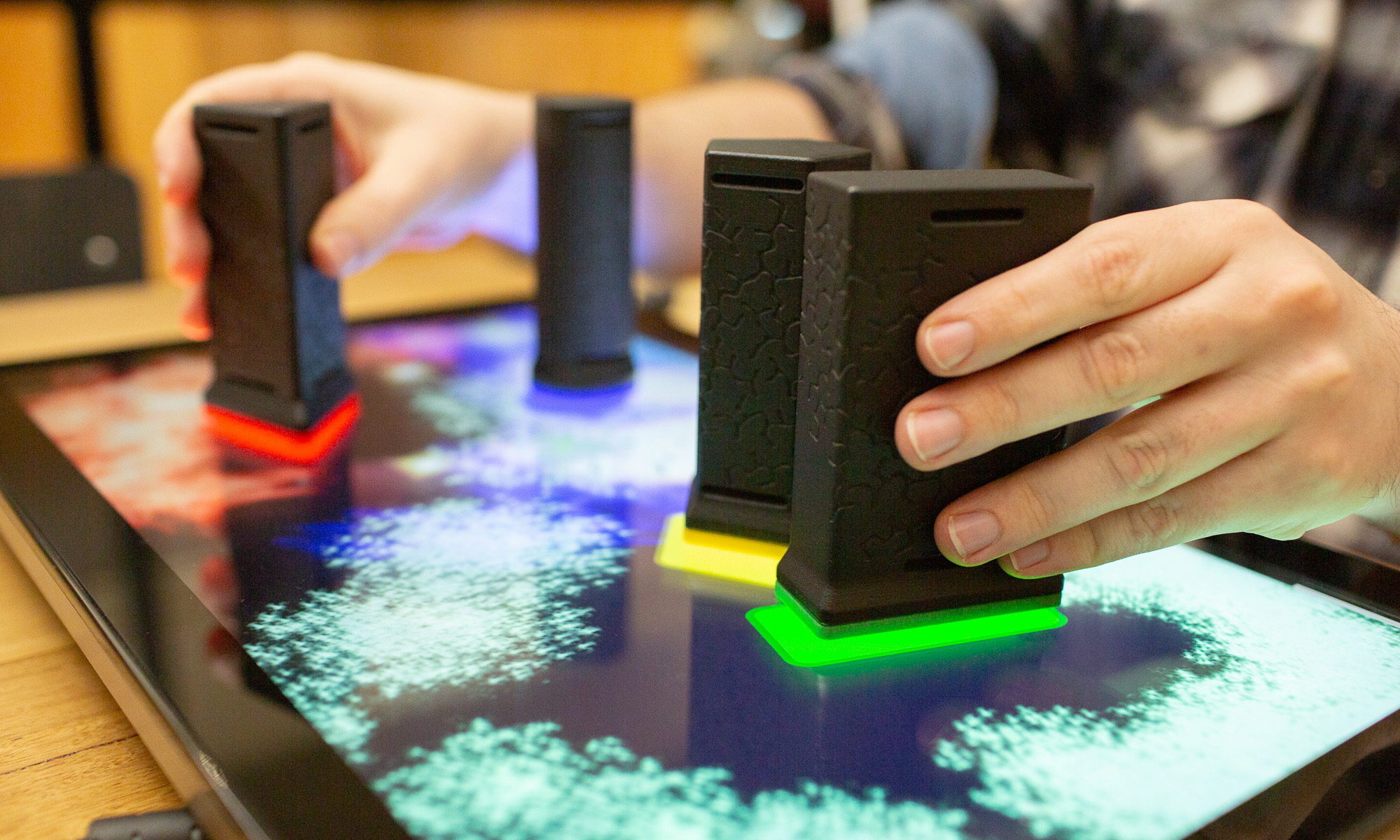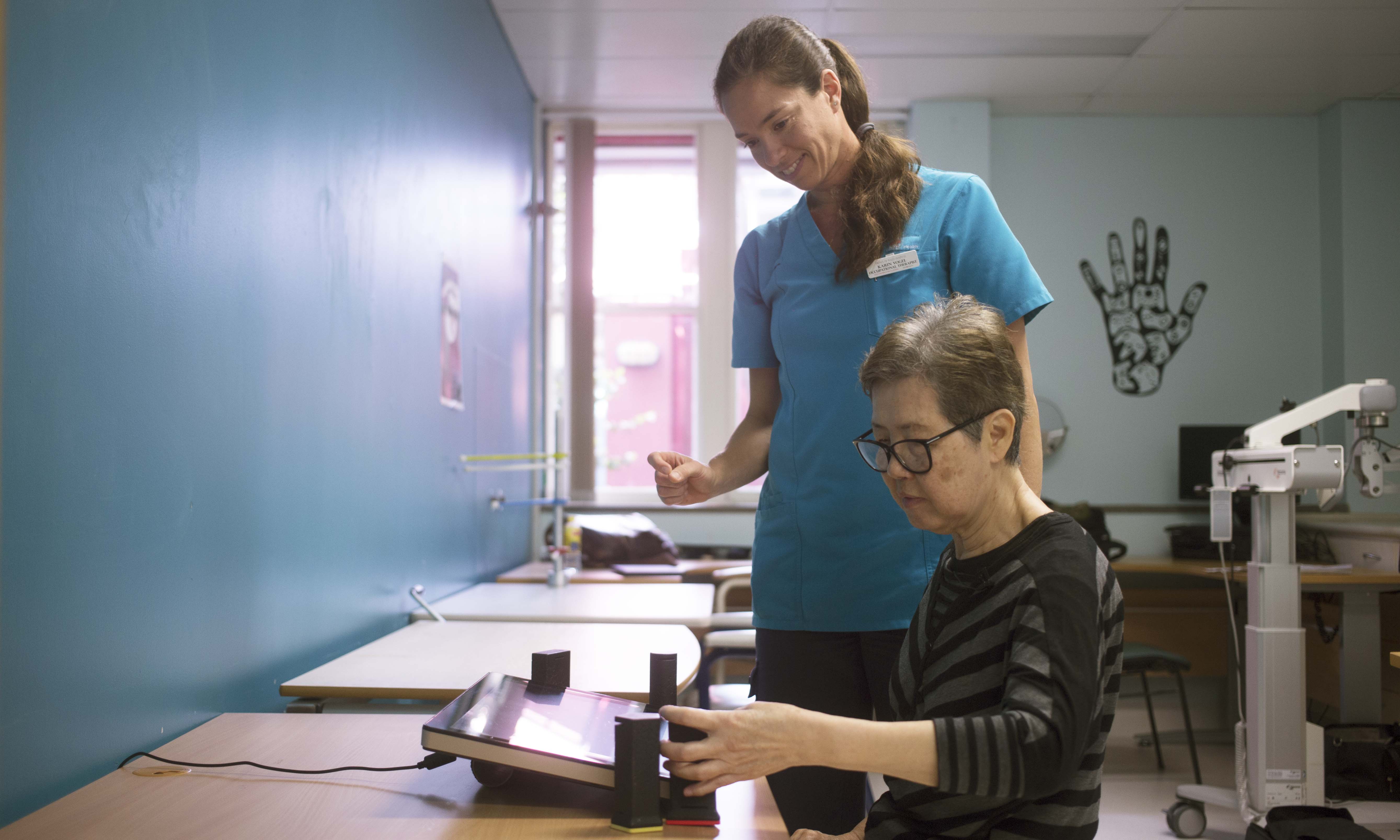
Game changer: New software for stroke rehab
A new touch-screen therapy tool could accelerate the recovery of patients who have suffered a stroke and change the way rehabilitation is delivered in hospitals and homes.
Designed for people with acquired brain injuries, EDNA is a digital rehabilitation software that delivers therapy through a series of fun and challenging therapeutic games via a touchscreen device.
Findings from a randomised clinical trial showed stroke patients who incorporated EDNA into their treatment programs experienced an improvement two to three times greater than those who received only conventional therapy.
RMIT University lead researcher, Associate Professor Jonathan Duckworth, said the digital form of rehabilitation was intended to maintain patient engagement, improving compliance and recovery.
“We designed EDNA so that patients could be doing therapy without it feeling like therapy,” he said.
Stroke is one of the most common forms of acquired brain injury and currently affects half a million Australians. It often results in impaired hand and reach function, making it a leading cause of disability.
Early and intensive rehabilitation leads to improved functional outcomes, however only 50% of stroke patients receive adequate therapy.
EDNA features a range of therapeutic games that involve tangible and graspable tools with augmented feedback, promoting brain plasticity to regain motor, cognitive and functional ability.
Performance data is then collected in the cloud, allowing therapists to remotely review the integrated data, monitor recovery and deliver tailored treatment programs.
Duckworth said that while the results couldn’t yet be used to predict longer-term recovery, the findings were promising and showed the value of including EDNA as part of a therapy toolkit.
“EDNA is the first upper-limb brain injury rehabilitation system to integrate clinic and home therapy to monitor recovery, so there’s great potential to transform the industry and improve outcomes for patients.”
The recent clinical trial, published in the Journal of NeuroEngineering and Rehabilitation, involved a specialised table-top touch screen.
A new study is now underway at Sydney’s Prince of Wales hospital using a portable version that allows for increased treatment frequency with independent therapy at home.
 Patients complete therapeutic games via an interactive touchscreen device.
Patients complete therapeutic games via an interactive touchscreen device.
Principle investigator and neuropsychologist from the University of Sydney, Dr Jeff Rogers, said the innovative technology had delivered benefits for stroke patients that had exceeded expectations
“We’ve worked closely with patients in testing and designing EDNA to ensure it will actually be used and we’re really happy with the results,” he said.
Study co-author, Professor Peter Wilson from the Australian Catholic University, said a home-based therapeutic solution had the potential to reduce the number of weekly hospital visits and aligned with recent trends towards patient-centred rehabilitation.
“Patients can struggle to maintain therapy activities between sessions, so having a portable device to take home and use on their own could increase therapy uptake and speed up recovery,” he said.
The research was supported by RMIT through the Design and Creative Practice Enabling Capability Platforms (ECP) Opportunity Fund and the Australian Government through Accelerating Commercialisation, an element of the Entrepreneurs’ Programme.
For media enquiries, please contact RMIT Communications: 0439 704 077 or news@rmit.edu.au
Acknowledgement of Country
RMIT University acknowledges the people of the Woi wurrung and Boon wurrung language groups of the eastern Kulin Nation on whose unceded lands we conduct the business of the University. RMIT University respectfully acknowledges their Ancestors and Elders, past and present. RMIT also acknowledges the Traditional Custodians and their Ancestors of the lands and waters across Australia where we conduct our business - Artwork 'Sentient' by Hollie Johnson, Gunaikurnai and Monero Ngarigo.